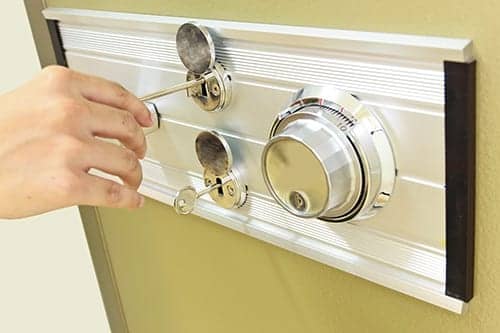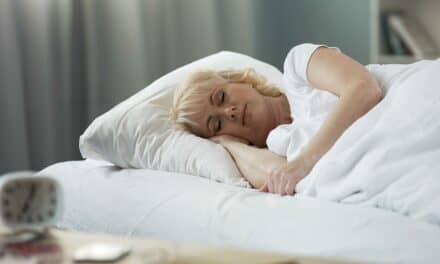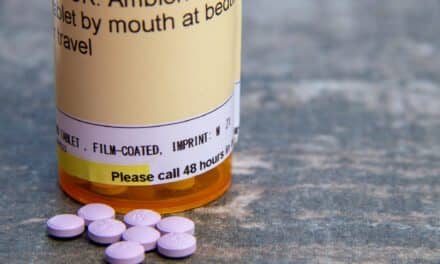Sleep medicine providers are using oral appliances along with positional therapy to treat a subset of patients.
For patients who refuse or fail CPAP, several alternative therapies may be considered. And recently, some providers are treating appropriate candidates with several alternative therapies used simultaneously to achieve better outcomes.
The use of positional therapy, a behavioral strategy to prevent patients from sleeping in the supine position when they have a positional component to their obstructive sleep apnea (OSA), along with oral appliance therapy (OAT) is a growing trend among sleep medicine providers and can aid patients on their journey to healthy sleep.
Who Is a Candidate?
To determine who is a good candidate for this combination therapy, a review of a patient’s records is a good place to start, providers say—specifically, all of the patient’s sleep studies should be thoroughly reviewed. “Percentage of time spent sleeping supine and supine AHI [apnea-hypopnea index] are the critical values necessary to determine if positional therapy will benefit the patient,” says David Barr, DDS, a dentist at the Koala Center for Sleep Disorders in Wausau, Wis. Barr, a member of the American Academy of Dental Sleep Medicine and a diplomate of the American Sleep and Breathing Academy, says patients who spend a great deal of time sleeping supine and have a significantly higher supine AHI can typically benefit from positional therapy.
Kelly A. Carden, MD, staff sleep physician at Saint Thomas Medical Partners-Sleep Specialists and secretary/treasurer of the American Academy of Sleep Medicine, says she typically determines if a patient is a suitable candidate at the time of the efficacy study for the oral appliance. Carden explains, “In my opinion, an efficacy evaluation is ideally performed as an in-center polysomnography (PSG), wherein the position of the mandible is calibrated in an effort to suppress the apnea-hypopnea index below five events per hour of sleep.”
Implementation in Care
Deciding when to prescribe the combination therapy of OAT and positional therapy varies based on a patient’s unique needs and responses to other therapies. Carden, who has been prescribing combination therapy of different kinds since her sleep medicine fellowship, says combination therapy is best done when an individual treatment has failed. She employs a variety of therapeutic combinations, including OAT with positional therapy, OAT with positive airway pressure (PAP) therapy, and PAP with positional therapy.
“My motto is to ‘decorate the patient as little as possible’ no matter how I am managing the sleep apnea. If the oral appliance, or PAP, appropriately treats the patient’s sleep apnea without additional intervention, then that is ideal,” says Carden. “Thus, in my practice, I tend to discuss combination therapy when a primary therapy fails to control the sleep apnea alone—for example, persistent OSA despite maximal advancement of the oral appliance or when the primary treatment alone is intolerable.”
Barr has employed positional therapy in combination with OAT for patients for 9 years. “Typically, I have been introducing positional therapy with vibro-tactile devices after I have reduced the overall AHI with appliance therapy and still have significant supine AHI,” says Barr. “I have had a small sample of position-dependent OSA patients that I have given a trial with the vibro-tactile device prior to OAT, some with very positive results.”
Rodney E. Willey, DDS, DACSDD, DASBA, CEO of the Koala Center for Sleep & TMJ Disorders, says, “A PSG or home sleep test (HST) will both indicate if there is a positional component worsening the OSA in a specific position. We typically will treat with a mandibular repositioning appliance (MRA), adjusting it to the optimum position. At that point we will order an efficacy PSG or HST to prove its efficiency. We would then consider positional therapy if and when it is appropriate.”
Benefits of Combination Therapy
According to Barr, positional combination therapy can have a significant improvement in patient outcomes. This is particularly evident in patients who are CPAP intolerant and do not respond to OAT due to positional obstructive sleep apnea (POSA). Barr says, “As many as 70% of patients diagnosed with OSA are position-dependent. Positional combination therapy can result in better management of OSA patients than would be possible with OAT alone.”
What compliance rate does this combination therapy typically have? We’re not sure yet. “Time will tell on whether requiring a patient to use two devices will affect their compliance rate versus patients who are only required to use one device. So far, asked patient acceptance has been very good,” Barr says, noting that some positional therapy devices objectively track compliance (whereas most oral appliances do not, though the technology is available).
The Night Shift from Advanced Brain Monitoring is one such POSA device that objectively tracks compliance. Barr has been using it with patients for the past 18 months. “The device monitors compliance, enabling the user or the clinician to determine how often the device was used, and its impact on sleep efficiency, awakenings per hour, time and percent time supine, and overall, supine and nonsupine percentage time snoring >50 dB,” says Dan Levendowski, president and cofounder of Advanced Brain Monitoring. In a study published in the Journal of Clinical Sleep Medicine, Levendowski says the treatment effect of the device included significant reductions in cortical arousals, awakenings, stage N1 sleep and snoring, and reported symptoms of depression.1
According to Willey, who has been treating sleep apnea since 2010, compliance is dependent on the patient. “Some patients adapt easily while others find it too bulky and discontinue use of the positional therapy,” he says. “Combination therapy can be very effective when applied at the appropriate times. Like many treatment modalities in medicine, patient selection is imperative, as it does take a compliant patient for this to work.
“When there is a positional component, it can be quite beneficial. Most of the time, a patient’s AHI is less when they are not in the supine position. If the MRA doesn’t eliminate the obstructive airway completely, then adding positional therapy can be quite effective.”
NoPap Pillow Company senior consultant Julia Worrall, RN, and cofounder Kevin Vargas, say, “The effectiveness of oral appliance therapy is greatly influenced by sleep posture. By training the patient to sleep laterally, there is less ‘pull’ on the mandibular advancement device, less pressure on anterior teeth, greater efficacy in overall AHI reduction, and improved compliance.”
Insurance Coverage
Insurance coverage for this combination therapy is not guaranteed, according to Carden, who encourages patients to do the research to understand the financial costs. “Insurance coverage for the various treatments for sleep apnea varies substantially from company to company and from policy to policy. I encourage patients to contact their insurance carrier so they understand the financial impact of treatment,” says Carden. “I will say, however, that my patients often report that coverage specifically for a positional sleeping device is limited.”
Barr also finds that payors have not yet begun to cover this combination therapy. However, if the positive benefits of the joint therapy can be shown, he says perhaps coverage will soon follow. “I have not been able to get insurance reimbursement for this type of combination therapy yet. I charge my normal appliance fee plus $350 for the Night Shift,” says Barr. “I believe that there will be much debate about the appropriateness of beginning OSA treatment with a vibro-tactile device. If it can be shown that the AHI of a severe OSA patient can be reduced to the moderate or mild level with a vibro-tactile device, will that patient be approved for treatment with OAT?”
Products to Consider
In addition to Night Shift, there are a number of options available for clinicians who wish to prescribe positional therapy. These include Slumberbump, a positional belt worn around the chest designed to keep patients comfortably on their sides. “Slumberbump works in sync with other treatment methods and keeps patients in a side-sleeping position, which can help increase the effectiveness of oral appliance therapy,” according to Shad Morris, DMD, CEO of Slumberbump. “Positional therapy is one piece of the puzzle as we work to solve some complicated sleep disorders, but it’s a valuable and complementary piece.”
David Gergen, CDT, executive director for the American Sleep and Breathing Academy, says, “For the past 6 years, I’ve been traveling the country working with dentists and physicians to help former NFL greats with their sleep disorders. We have put several players on CPAP, several hundred on oral appliances, and a couple on combination therapy. The latest innovation to our campaign is positional therapy. Using the Slumberbump in combination with an oral appliance has been extremely effective.”
The NoPap Positional Pillow from the NoPap Pillow Company is another option. It is a half body pillow designed to help the user stay in a lateral sleeping position during sleep. “When used properly, the two-sided support minimizes tossing and turning and prevents them from rolling onto their back. It combines the comfort of an L-shaped side sleeper pillow with the support of a back wedge pillow,” say Worrall and Vargas.
Designed by board-certified sleep physician Joseph Crocetti, DO, the Zzoma Positional Device is another option. Available via prescription, it is a positioner worn around the upper torso to restrict patients from moving from the lateral to supine position.
The iSideSleep mattress and topper are also available for side sleeping. “The major challenges in side sleeping are keeping the individual on his/her side and reducing pain in the shoulder, neck, and back from the sheer pressure on the joints due to the standard flat mattress,” says Lee A. Surkin, MD, board certified sleep physician and cardiologist and president and chief medical officer of Squire Sleep Systems, makers of iSideSleep. Surkin says the patented design features an arm channel and incline that removes pressure from the shoulder, aligns the spin, and anchors the user on his/her side. “Our internal studies have shown maintenance of side sleeping position, a dramatic improvement in sleep consolidation, reduced movement, reduced or resolution of snoring, and improved AHI. The mattress is going to be studied in a research trial for the Department of Defense at the Madigan Army Base north of Seattle after which we anticipate FDA clearance as a treatment for positional OSA.”
An over-the-counter alternative developed by a sleep apnea patient is Rematee, which sells a Bumper Belt and Anti-Snore Shirt.
Becky Simmons, RRT, BSRT, clinical respiratory consultant for Contour Products, says the company’s CPAPMax Pillow includes a variety of features such as an orthopedic contoured design intended to open up the user’s airway, removable layers for pillow height adjustment, and side cutouts to help reduce leaks and noise. “If the patient is a side or supine sleeper, the pillow creates better neck and head alignment to promote a more patent airway. This would assist in a proper fit of the oral appliance and could lessen the obstruction from soft tissue,” Simmons says.
Keeping Options Open
Future research is needed to provide further evidence supporting the use of OAT and positional therapy, but manufacturers and sleep medicine providers have already seen the positive impact of this joint therapy in patient outcomes. “I continue to prescribe combination therapy based on feedback from patients. It is also nice as a practitioner to be able to provide treatment options for my patients,” Carden says. “I encourage practitioners to keep all options in mind for the treatment of sleep apnea so that treatment can be tailored to the individual. Positional therapy and combination therapy should be in their armamentarium.”
Overall, the implementation of this combination therapy may allow for more options for patients with OSA. “For many years, sleep disorder treatments have been one dimensional. The most exciting advances in sleep medicine are coming from the…combination of therapies for a more comprehensive treatment approach,” says Morris.
Cassandra Perez is associate editor for Sleep Review. CONTACT [email protected]
REFERENCE
1. Levendowski DJ, Seagraves S, Popovic D, Westbrook PR. Assessment of a neck-based treatment and monitoring device for positional obstructive sleep apnea. J Clin Sleep Med. 2014;10(8):863-871.





